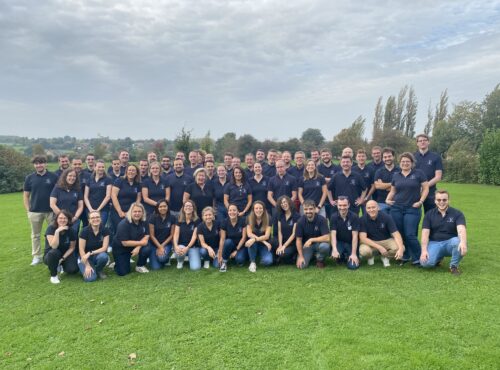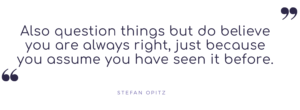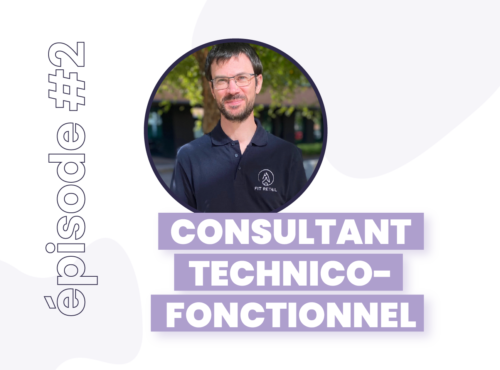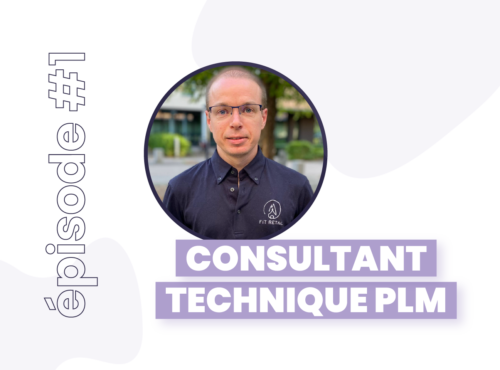 Fit Retail celebrates its 5th anniversary!
Fit Retail celebrates its 5th anniversary!
Stefan’s view of the consulting profession
12/03/2021 by Carmel Mc Donald

Stefan, Director of our German BU, shares with you his vision of the consulting profession. An interesting reading, full of meaning, very personal in the end. Discover the consultant’s job through this post and Stefan’s more personal reflections.
Before starting, can you explained how did you get into the consulting business ?
SO: I got my degree in technical cybernetics engineering at the university. If you don’t know what it is, well, join the club… laughs… Anyway, the universe decided that I wouldn’t follow the normal path of an engineer, so I ended up in the fashion industry. No regrets here because it’s one of the most interesting industries in the world. I had the chance to work for fashion brands and software companies. And now I have been given the opportunity to build up a consulting subsidiary focused on the fashion industry for Central Europe, which I am super happy about. Thank you, Fit Retail, for the trust.
I have often been asked “what I do in the fashion world as a cybernetics?, or as a software consultant?” This may not seem “coherent” ….. However, for my job it has always seemed obvious.
What is the job of consultant for you ?
SO: For me, the job of consultant lies in the ability to enhance the perception of others. Or at least, the ability to make a sufficient contribution to allow others to rethink their current positions, to adjust it for the better, whatever the initial situation.
Has your vision of the progression changed by joining a consulting company ?
SO: Certainly, the path I have traveled so far, and my current challenges related to the development of the German BU have led me to reflect on what consulting was all about. And above all to ask myself why consulting companies have such a bad reputation.
Let’s be honest for a second: Do consultants proclaim loud and clear what they do for a living?
– No, they usually don’t.
Haven’t you often heard someone in your entourage complain about a consultant who cost a fortune without any return on investment?
-
I’m sure that if you look around, you’ll find many examples…
Why do companies have that reputation ?
SO: In my experience, there are two types of approaches to consulting:
– The “good practice” approach: To popularize, this approach sums up consulting in the contribution of methodology and tools. An experienced person has distilled his experience into digestible content (slides, books…) so that other people can explain them to clients.
– The “personal consulting” approach on the other hand is judging the situation based on the information provided by the client and providing very personal feedback on the problem, considering the personal experience of the consultant. Best practices are coming from personal experience and are not a branded master solution.
Which meets two types of client expectations:
– The outsourcing of decision-making: There is already an internal strategy around a project and the human and financial stakes are important, error is not “possible”. So, a consulting company is called to reconfirm the strategy.
– The scenario of the “Damsel in distress” is that of a person who needs advice for a challenge, where the origin of the problem might be unknown at that moment. Anything which can contribute to solve the situation is welcome.
There are other types of approaches and expectations, but to illustrate my point, these four types will be sufficient. I think many of you have encountered these types of people in the past.
Now what is interesting is to mix these customer expectations and consulting approaches:
– “Best practice” and “Outsourcing”: this works pretty well, because you don’t really need to have first-hand experience. You can easily apply the theory that has been transmitted by a more experienced consultant through slides. In the worst case, the consulting firm is blamed and will defend itself with a case about the inability to fully address the problem within the proposed budget.
– “Best practice” versus “Damsel in distress”: this can only work if the problem encountered can be resolved by a “scripted” solution – this is rare – but if it works, it is usually thanks to the talent of the consultant to adapt the content.
– “Personal consulting” as opposed to “outsourcing” – has its challenges, because there is no interest in a real analysis of a problem and derived approaches. This usually leads to a situation where both parties are frustrated because one wants to contribute, and the other feels being slowed down by the analysis of a known problem.
– “Personal Consulting” versus “Damsel in Distress” – this is what I would call a natural synergy. A real interaction where both parties contribute and leave with a good feeling because it is a teamwork experience. Of course, this requires a consultant with the necessary skills and an open-minded client who is willing to live the change.
If we consider the different scenarios, we understand why consulting companies have a bad reputation as the pairings are not always have a real chance of success.
So, can you tell us more about your positioning in the business ?
SO: For me, most of our clients’ challenges cannot be solved with a “ready-made” answer. The fashion world has a lot of different “flavours”, so that from my experience there is not this one “magic” approach.
Doing the job of a consultant requires implementing a process of reflection – even if the consultant can rely on proven methodologies and tools, they alone cannot guarantee the quality of his work. This process of reflection – although it can be based on talent – is generally the result of several years of experience and in-depth knowledge of one or more sectors.
Finally, what advice would you give to “young people” starting out in the sector ?
SO: Take the time, experiment, learn before applying for high added value consulting missions. I sincerely believe that multiplying experiences forges quality consultants. Sometimes the small details are important.
12/03/2021 by Carmel Mc Donald






